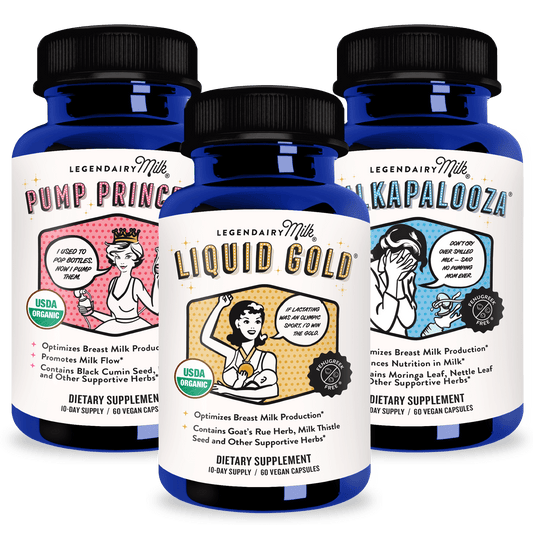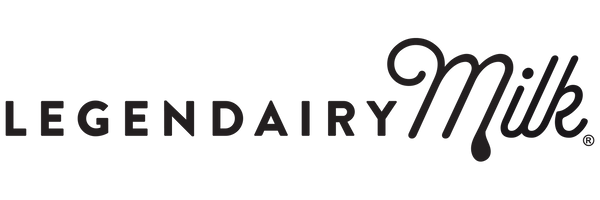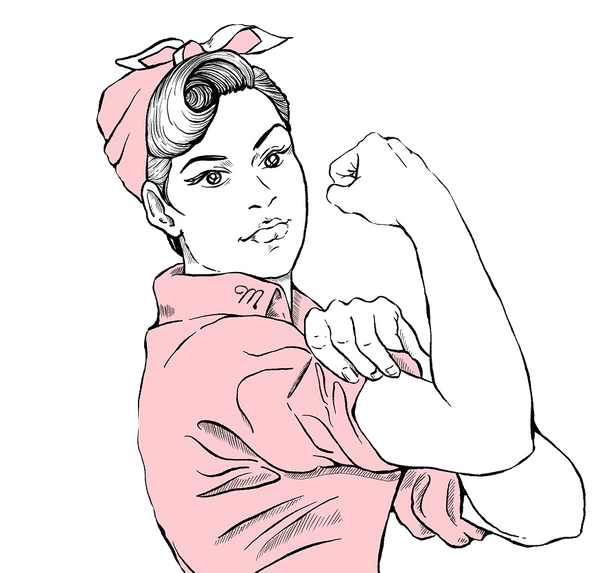LATCHING 101
The steps of latching
Mastering the latch = happy feeding! Start with comfy positioning and a wide-open mouth, aim your nipple to hit the baby's upper lip, then watch them latch deeply—think chin in, lips flanged. Smooth, comfy nursing awaits!
Building blocks for successful latching & positioning
Nail the latch with comfy positioning: tummy‑to‑tummy, chin to breast, nose to nipple—bring baby to you, not vice versa. Aim for a wide open mouth that takes in plenty of areola, lips flanged, with no pain—just smooth, efficient feeding!
When Your Baby Won’t Nurse
Having trouble with nursing? Keep the vibes calm—tons of skin-to-skin, ultra-casual breast offers, and no pressure. Tip: hand-express or pump first so baby gets instant milk reward and learns nursing = win!
Why Does My Baby Pop On & Off During Breastfeeding?
Babies often unlatch due to oral restrictions (like tongue-tie), distracting surroundings, or milk flow issues—too fast or too slow. Proper positioning, pre-pumping, burping, and calm catch-up moments can help smooth it out!
SUPPLY 101
How to boost milk supply fast
Want to boost your milk supply fast? Pump or nurse frequently—aim for 8–12 times a day. Add power pumping sessions, warm compresses, and breast massage to help flow. Stay hydrated and consider herbal supplements like goat’s rue to naturally support your supply. You’ve got this!
How to increase supply while supplementing
Supplementing? No problem! Power pumping tricks your body into making more milk, while herbs like goat’s rue and moringa give your supply a natural boost. Keep nursing or pumping often, stay hydrated, and get plenty of rest. With the right routine, you’ll ramp up your milk production in no time!
10 herbs to increase breast milk supply
Looking to boost your milk supply? Incorporating herbs like goat's rue, fennel and moringa into your routine may help. Remember to consult with a healthcare professional before adding any new supplements to your regimen.
5 products to help boost your milk supply
Looking to boost your milk supply? Supplements like Liquid Gold® and Pump Princess to tools like Sunflower Lecithin and Milkapalooza®, these products aim to enhance milk production and alleviate common breastfeeding challenges.
LET-DOWNS 101
What Can Potentially Inhibit Let-Downs?
Your letdown’s going AWOL? Turns out stress, tight bras, and even that judgmental houseplant might be messing with your milk flow. Don’t worry—this article spills the (breast) milk on what could be blocking the magic and how to get things flowing like a again.
Oxytocin, Cortisol, and Stress: How Hormones Impact Your Let-Down Reflex
If your let-down’s dragging its feet, blame those fickle hormones—oxytocin and prolactin are the real milk MVPs (when they’re in the mood). Stress, pain, or bad vibes can stall the flow, but don’t worry—warm compresses, baby snuggles, and a little laughter can help get things back on track.
How to Get More Letdowns & Maximize Your Milk Output
Ready to turn your pump session into a milk-making masterpiece? This article serves up simple, letdown-boosting hacks like massage, warm compresses, and pro-level pump tricks. More letdowns mean more milk—and that’s a total win for you and your little one.
Why the First Two Let-Downs Matter in Breastfeeding and Pumping
Think your pump’s doing the heavy lifting? The first two letdowns are where the milk magic really happens—about 76% of your output comes then. Start in stimulation mode, switch to expression once milk flows, and hit that letdown button again when things slow to keep the milk party going strong.
Discover Your Perfect Match!
TMI is not a thing here... tell us your needs, and we'll recommend the top Legendairy Milk products for you!
PUMPING 101
Power Pumping To Increase Milk Supply: What You Should Know
Need a supply boost? Power pumping mimics cluster feeding to tell your body, “make more milk!” With just one hour a day and some comfy gear, you can see results in a week or two—no magic, just smart milk math.
Increasing Milk Supply While Pumping
Want to pump more milk? It’s all about consistency, good flange fit, hydration, and a little massage magic. Add snacks, skin-to-skin cuddles, and power pumping, and you’re well on your way to a milk stash win!
Nursing & Pumping While Traveling
Traveling with a pump? No sweat. Stick to your routine, pack smart (hello, cooler bags!), and claim your space to pump with confidence—planes, airports, hotels and all. Liquid gold doesn’t take a vacation!
Tips for Exclusively Pumping
Exclusively pumping = full-time milk CEO. Aim for 8–12 pumps a day, stay hydrated, use the right gear, and don’t skip the fridge hack or warm compresses. With the right setup, you’ll be pumping like a pro!
Maximizing Milk Production With Hands-On Pumping
Not getting as much milk as you hoped? Hands-on pumping is your secret weapon—massage and compress while you pump to boost output, clear clogs, and keep things flowing. It’s like giving your pump a productivity partner, and together, you’re running a milk-making empire.
FEEDING 101
Paced Bottle Feeding
Switching from breast to bottle? Paced bottle feeding is your secret weapon. By holding the bottle horizontally and letting your baby suck, swallow, and breathe at their own pace, you mimic the natural rhythm of breastfeeding. This method helps prevent overfeeding, reduces the risk of nipple confusion, and supports a smoother transition between breast and bottle.
Side-Lying Bottle-Feeding
Ready to make bottle-feeding feel like a cozy cuddle? Side-lying bottle-feeding offers a natural, relaxed position for your baby, promoting slower, more controlled feedings and reducing the risk of overfeeding and gas. Plus, it’s easier on your arms and encourages bonding through eye contact and skin-to-skin moments.
Newborn Cluster Feeding
Cluster feeding is your baby's way of saying, "I need more milk, more love, and more of you." Typically occurring during growth spurts (like at 2–3 days, 2–3 weeks, 6 weeks, and 3 months), these feeding sessions are shorter but more frequent, often in the evening. While it can be exhausting, it's a sign your baby's developing and your milk supply is adjusting to meet their needs.
Tips for Babywearing & Nursing on the Go as the Weather Gets Warmer
Nursing and babywearing on the move? Keep it cool, calm, and totally boss-level! Slip into breezy carriers, dress baby like a summer snack, and rock those nursing-friendly outfits for quick feedings. Bonus points: you’ve got the legal right to nurse anywhere—so flaunt that mama magic with zero shame!
Benefits of Skin-to-Skin Contact
Skin-to-skin contact is your newborn's VIP pass to the world—no TSA required. This cozy cuddle fest helps regulate their temperature, breathing, and heart rate, while also boosting your milk supply and bonding time. Plus, it releases oxytocin, the "feel-good" hormone, making you both feel like a million bucks. So, strip down (baby, not you) and snuggle up—it's the ultimate power move for both of you.
PAIN & DISCOMFORT 101
Tips for Getting Rid of a Painful Bleb Milk Blister
Got a painful milk bleb? Skip the popping and try warm compresses, olive oil, and gentle massage to clear the clog. Adjust your latch, wear comfy bras, and call in a lactation pro if it won’t budge. Relief is on the way!
Clogged ducts: Prevention, treatment, & recovery
Got a clogged duct slowing things down? Warm compresses, breast massage, and sunflower lecithin can help get things moving and ease the pressure fast. Keep nursing or pumping regularly, switch up positions, and loosen that bra—your milk flow will thank you!
What Causes Sore Nipples from breastfeeding?
Sore nipples? It’s usually from a shallow latch, engorgement, or an ill-fitting pump flange. Try warm compresses, massage, and making sure baby’s latch is deep and comfy. If pumping hurts, check your flange fit, use a little lube, and ease up on the suction—your nipples will thank you!
Suck Blisters: What Are They and Why Do they Happen?
Suck blisters are tiny lip bumps from too much friction, often caused by a shallow latch or tension. They’re a sign your baby might need help with positioning or oral function. A deeper latch and some expert support can smooth things out!
TABOOS
Breastfeeding Your Toddler
Breastfeeding your toddler isn’t just about nutrition—it’s comfort, bonding, and boosting their immune system all in one. Experts say two years or more is great, so why rush to stop when it’s still working wonders?
Can you get pregnant while breastfeeding? Understanding your Fertility during Lactation
Can you get pregnant while breastfeeding? Totally—especially if you’re not nursing exclusively or your period’s back. Breastfeeding isn’t a guaranteed birth control, so if you’re not ready for round two, better keep a backup plan handy!
Hormones in Pregnancy, Breastfeeding, And Sex
Pregnancy and breastfeeding hormones can seriously mess with your sex drive—thanks, prolactin and oxytocin! Milk leaks during intimacy? Yep, that’s a thing. But with a little communication and self-care, you’ve got this hormone rollercoaster handled.
What Effect Does Alcohol Have on Your Milk Supply?
Wondering if you can sip while you nurse? A little alcohol now and then won’t wreck your supply, but too much can slow milk letdown. Pro tip: wait about two hours per drink before feeding to keep things smooth.
Flange 101
-
Nipple Size and Breastfeeding
Read the Blog HereNipples stretch (a lot!) during nursing—totally normal and a sign things are going well. If they come out looking squished like a little lipstick, it might be time to tweak that latch. Pumping? Grab the right flange size and some lube for a smoother, comfier milk session!
-
Silicone Nipple Ruler - Instructional Guide
Read the Blog HereThe Silicone Nipple Ruler helps you find the perfect pump flange size for comfy, efficient milk flow. Just measure from the base to your nipple tip on each side (because sizes can differ!). Since nipple size can change, check your measurements now and then to keep things flowing smoothly.
















